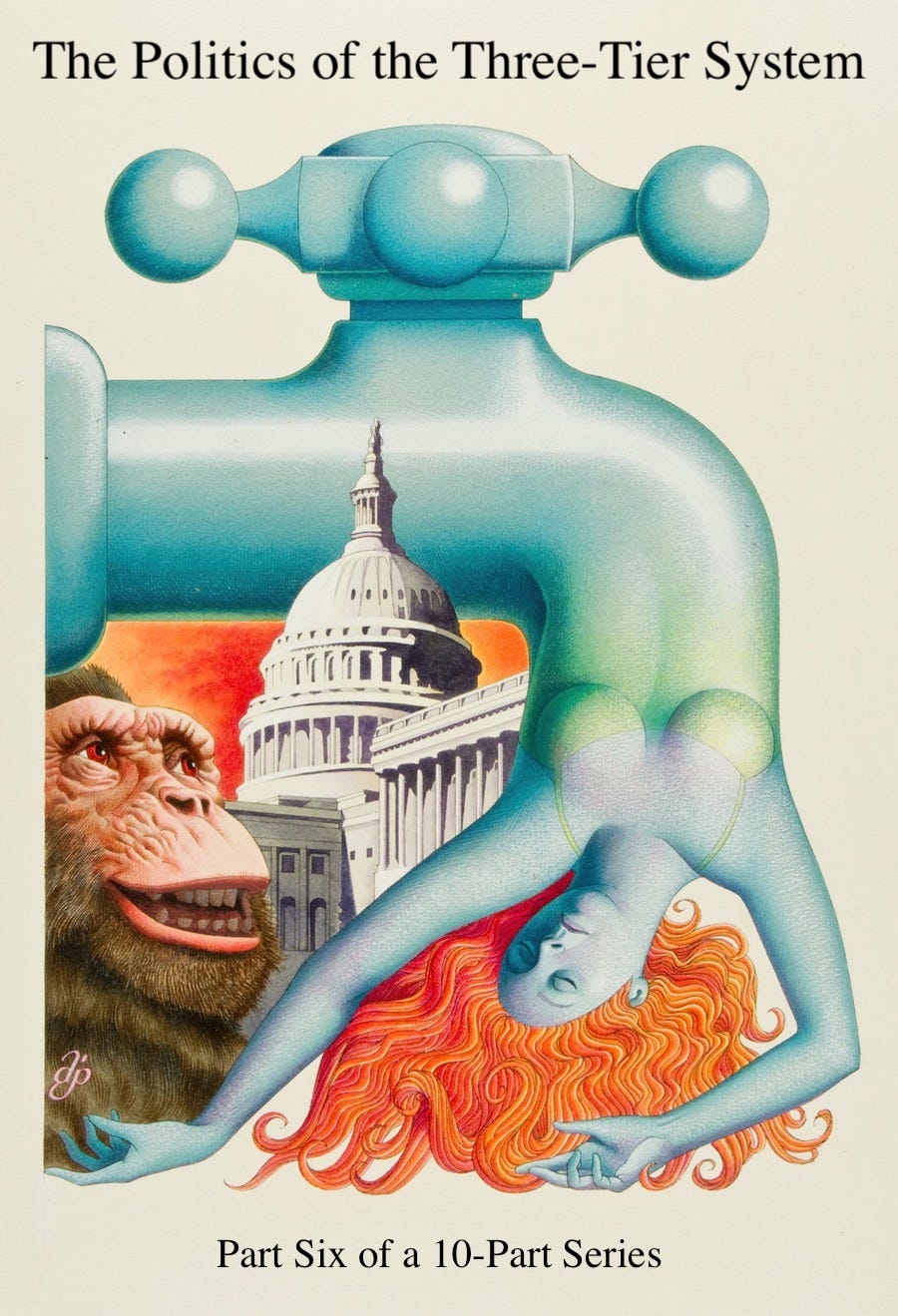The Politics of the Three-Tier System
Part Six of a 10-Part Series on the Three-Tier System of Alcohol Distribution
This is the sixth of a 10-part series examining the Three-Tier System of alcohol distribution in the United States. It is my intent to examine the details, history, impact, politics, and alternatives to this uniquely American set of alcohol laws.
Politics surrounding the Three-Tier System (TTS) plays out at the state level, in the many state capitols across the country. This is due to the 21st Amendment’s grant of power to the states that they should be the jurisdictions that regulate the sale and distribution of alcohol. This arrangement along with the distinct and separate interests of the three tiers (producers, wholesalers, retailers) is what shapes the political dynamics of the TTS.
As we mentioned in previous installments of this series, the TTS is defined by two principles: 1) each tier shall be separately licensed and no single entity may have ownership within more than one tier. 2) A state’s licensed retailers are required to purchase their inventory only from in-state wholesalers, while those wholesalers are the only entity that may purchase alcohol from producers or importers located inside or outside the state.
The politics of the TTS revolve entirely around loosening this strict system of alcohol distribution. There has been no political effort to tighten the system as in its strict form it is as tight as it can be without verging into a state-run system that employs price and wage controls. Such systems exist in some “control states” but these examples of alcohol distribution can’t be called Three Tier Systems.
As with all other political issues, the politics of the TTS are about power. For the government, that power is about raising tax revenue. For the private companies that exist within the TTS the political issue revolves around controlling the movement of goods. The entity or tier with the greatest control over the movement of goods controls the directional flow of the money.
Since the institution of the TTS of alcohol distribution in the mid-1930s, the middle tier—the wholesale tier—has possessed near complete control of the movement of alcoholic goods. Maintaining that control (and tightening it) has been the primary concern of wholesalers and their trade associations for decades. For producer and retailers and their trade associations, the goals as been loosening the wholesalers’ control of the distribution of alcohol and unlocking the revenue that the wholesalers control.




